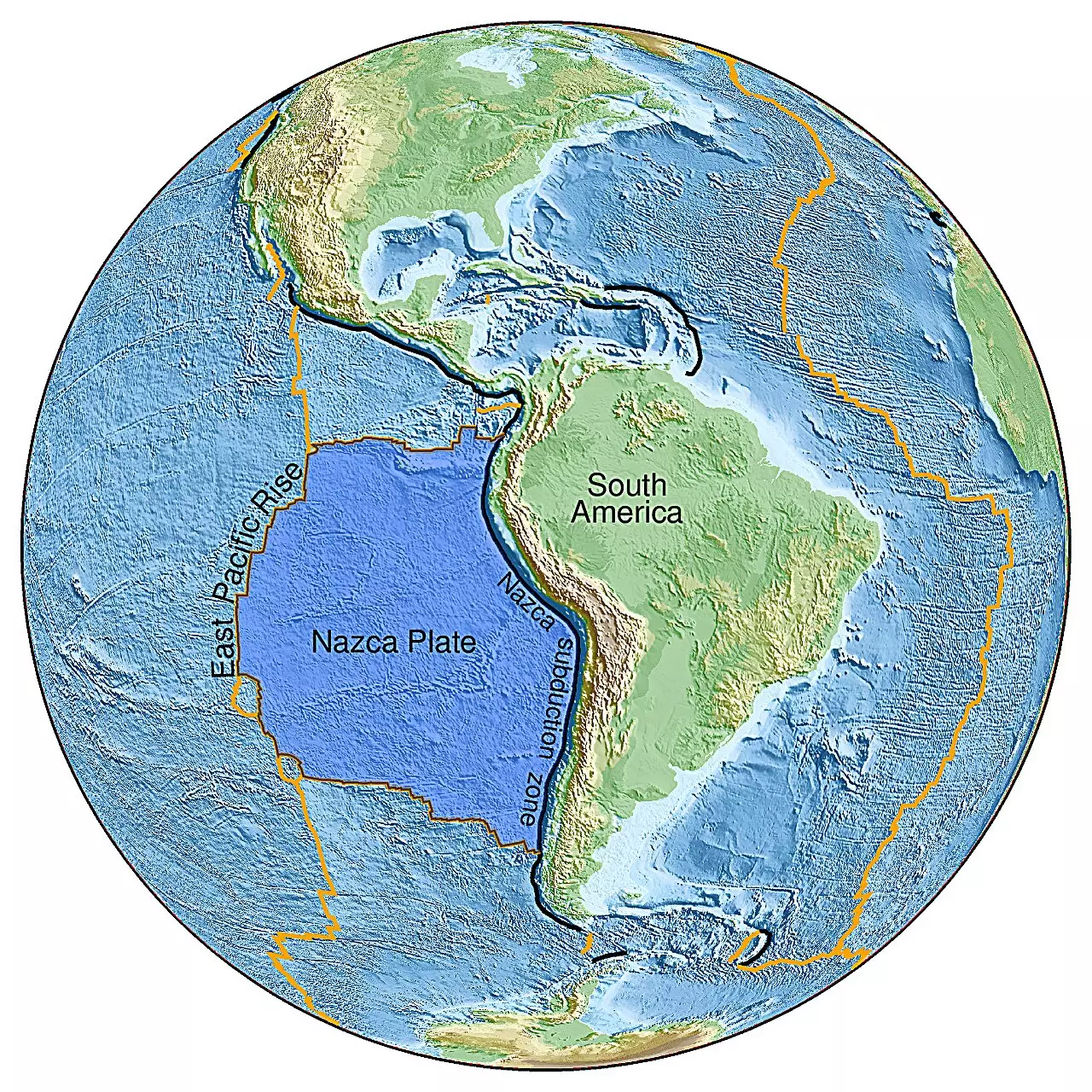In a remarkable advancement in geological science, researchers from the University of Maryland have unveiled compelling evidence of an ancient seafloor that sank deep into the Earth hundreds of millions of years ago. This groundbreaking discovery fundamentally challenges long-held theories regarding the Earth’s interior structure and the processes governing its dynamics. Through innovative seismic imaging, scientists have gained unprecedented insights into the enigmatic workings of our planet, offering a deeper understanding of how the Earth’s surface has transformed over geological time.
Located at a tectonic plate boundary at the East Pacific Rise in the southeastern Pacific Ocean, the previously overlooked section of seafloor has provided researchers with critical evidence illuminating the Earth’s mantle— a layer between the crust and core. The research team, spearheaded by postdoctoral researcher Jingchuan Wang and published in the journal Science Advances on September 27, 2024, employed cutting-edge seismic imaging techniques to explore this uncharted territory of Earth’s inner structure.
The findings revealed an anomalously thick region within the mantle transition zone, situated approximately 410 to 660 kilometers beneath the surface, which serves as a boundary between the upper and lower mantles. This thickened area may play a key role in explaining the structure of the Pacific Large Low Shear Velocity Province (LLSVP), a significant zone in the Earth’s lower mantle. “The thickened area serves as a fossilized fingerprint of an ancient oceanic slab that subducted around 250 million years ago,” Wang noted. This critical insight allows scientists to glimpse into a time long past, when tectonic activities shaped the Earth’s foundation.
Subduction is the geological process whereby one tectonic plate slips beneath another, effectively recycling surface materials back into the mantle. This phenomenon is often evident through various surface indicators such as volcanic activity, seismic activity, and the formation of deep oceanic trenches. Traditionally, geologists have relied primarily on surface rock samples to study subduction. However, Wang’s team has innovated by utilizing seismic waves to penetrate the ocean floor, revealing deep-seated structures hidden beneath miles of water, offering a novel perspective on this age-old process.
Wang aptly compared their seismic imaging to a CT scan, which is commonly used in medical imaging, allowing for comprehensive cross-sectional views of the planet’s inner workings. He elaborated on how conventional wisdom suggested that oceanic slabs are wholly consumed by the Earth, leaving no trace of their existence above ground. Yet, through the application of seismic technologies, the researchers uncovered crucial evidence of ancient subduction that reshapes current understandings of how deep structures relate to surface geology.
What emerged from the team’s investigations was unexpected: materials were migrating through Earth’s interior at a significantly slower pace than previously postulated. The thickened transition zone implied the presence of colder material, suggesting that some oceanic slabs encounter resistance and become “stuck” as they descend through the mantle. “We discovered that in this region, materials were migrating at approximately half the speed we anticipated,” Wang explained. Such revelations imply that the mantle transition zone could act as a significant barrier, exerting influence on the flow of material through the Earth.
These findings ignite further inquiries pertaining to how the deep Earth’s dynamics impact surface phenomena across vast distances and extended timescales. The implications of their research stretch far beyond the confines of the initial discovery; they pose critical questions about tectonic movements and the history of our planet.
Looking to the future, Wang and his team plan to broaden the scope of their research to encompass other regions of the Pacific Ocean and beyond. Their ultimate goal is to generate a comprehensive mapping of both ancient subduction and upwelling zones—an intricate geological process that revives subducted materials back to the Earth’s surface. By enhancing models of tectonic movements using seismic data collected from their investigations, Wang’s team aims to knit together a more cohesive narrative of Earth’s geological development.
“This is merely the beginning of what we can uncover,” Wang said confidently. The prospect of additional ancient structures lurking within the depths of our planet’s interior beckons the scientific community, highlighting an unquenchable quest for knowledge that could revolutionize our understanding of Earth’s geological narrative.
The research conducted by the University of Maryland team marks a pivotal moment in the annals of geology, offering vital clues about the immense complexities of the Earth’s mantle. By harnessing state-of-the-art seismic imaging technologies, scientists have opened a window to the past, revealing the intricate interplay of deep Earth processes and the changes observed on the planet’s surface. This study not only rewrite communications regarding tectonic dynamics but also lays the groundwork for a multitude of future inquiries, ensuring that the quest for understanding our planet’s history continues in earnest.

